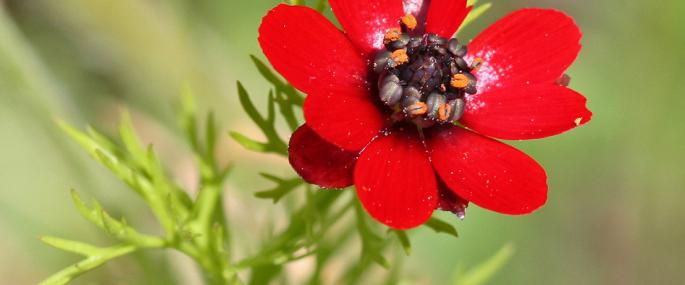Once considered as a weed of arable fields, the development of intensive agricultural practices all but wiped out Pheasant's-eye in the wild. This wine-red flower is now most likely to occur as part of intentional wildflower seeding or as the result of the disturbance of soil containing old seed banks. Its strongholds remain roadside verges, field margins and wasteland; it is sensitive to farming herbicides and requires calcium-rich soils to thrive. It flowers from June to August, often alongside other 'arable weeds' (also called 'cornfield flowers') such as Corn Chamomile and Corncockle.
Before the Second World War, arable weeds, such as Pheasant's-eye, would have peppered the landscape with colour in the summer months. But the post-war intensification of agriculture and widespread use of herbicides have driven these species to the brink of extinction in the wild. Nevertheless, The Wildlife Trusts manage many farmland and grassland habitats for the benefit of these plants, often using traditional methods. By volunteering for your local Trust you can help too, and you'll make new friends and learn new skills along the way.
